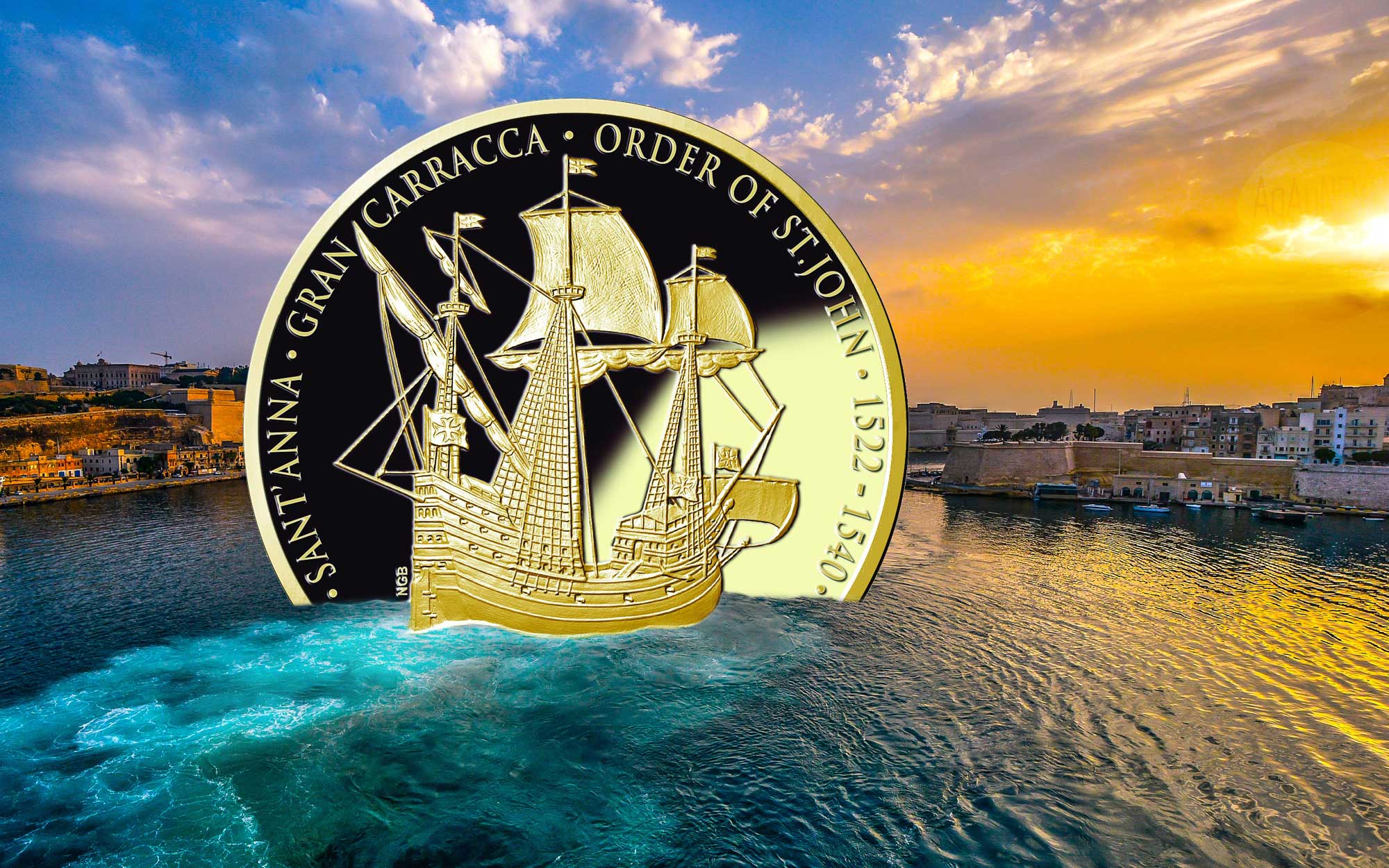Said by some to be the first armoured warship, the carrack Sant’Anna is showcased on Maltese coins
Of all the world’s large bodies of water, the Mediterranean Sea has probably had a more profound influence on humanity than any other. The backyard of such massively influential empires as the Greeks, Romans, Persians, Egyptians, and countless others, this almost totally surrounded sea has been the site of epoch making events over many millennia.
It isn’t just the land surrounding it that has been of great influence, but the shipping that has plied its trade or gone to war upon its waters. Great fleets have done battle and shaped the future of Europe and the world as a whole, with many individual ships entering history through their design or their actions. One such vessel is the Renaissance carrack, the Sant’ Anna, the pride of the Order of St. Johns, also known more popularly as the Knights Hospitaller. The Grand Master of the Order, Philippe Villiers de L’Isle Adam, was carried to Malta in 1530 aboard the vessel, which explains why it’s featured on this latest Maltese coin pair.
There’s more about this adventurous vessel further down, so let’s concentrate on the coin. Part of the Europa Star programme, which this year has Renaissance as its theme, the obverse is emblazoned with that series logo as its background, with the centre foreground filled with the coat-of-arms of Malta itself. A smaller version of the logo sits at the bottom. The reverse depicts an almost medieval style image of the Sant’ Anna itself. Maritime coins seem to be popular, and this looks to be a fine example of the genre – devoid of gimmickry, and relying purely on a classic style for its appeal.
Two variants are on offer. An ounce of sterling silver constitutes the more popular of the two, with a mintage coming capped at 2,500 pieces. At just 400 pieces in number, the 6.5 gram 22kt gold variant is the rarer of the two and carries fundamentally the same design. Both coins come boxed with a certificate of authenticity and are available now.
GRAN CARRACCA SANT’ANNA OF THE ORDER OF ST JOHN
Santa Anna was launched in Nice on 21 December 1522, one day before the Knights Hospitaller surrendered at the siege of Rhodes (1522) under honorable terms.
Santa Anna’s underwater hull was completely sheathed with lead plates. Above the waterline two of the six decks were also armoured with lead plates, which were fastened by bronze nails to the wooden hull. Santa Anna was designed to accommodate 500 marines besides her sailors and she featured large below-deck cabins and messes for her officers. The carrack housed a forge, where three weapon smiths could do maintenance work at sea. The ship even called several ovens and a mill its own, in order to provide the crew with fresh bread. The ship also featured a garden on board with flowers hanging down from the stern gallery in boxes.
In 1531, Santa Anna routed on its own an Ottoman squadron of 25 ships. One year later, the carrack took part in the expedition against the Peloponnese under the command of Andrea Doria, during which Koroni, Patras and the Turkish fortresses protecting the entry to the Gulf of Corinth were seized. In 1535 Santa Anna fought in the successful campaign of the Spanish fleet under Charles V against Tunis, where the Spaniards managed to capture over 100 ships of the Barbary corsairs. Her firepower contributed significantly in the assault on the fortress La Goulette which controlled the entry to the harbour.
Temporarily, the carrack was also employed as a wheat freighter, with an impressive capacity of up to 900 tons. Only eighteen years after her launch, Santa Anna was stripped and abandoned in 1540 on the order of Grand Master Juan de Homedes y Coscon, the 47th Grand Master of the Order of Malta, serving between 1536 and 1553. (Source: Wikipedia)
| SPECIFICATION | ||
| DENOMINATION | €10 EURO | €50 EURO |
| COMPOSITION | 0.925 silver | 0.9167 gold |
| WEIGHT | 28.28 grams | 6.50 grams |
| DIMENSIONS | 38.61 mm | 21.00 mm |
| FINISH | Proof | Proof |
| MODIFICATIONS | None | None |
| MINTAGE | 2,500 | 400 |
| BOX / COA | No / No | Yes / Yes |







Leave A Comment